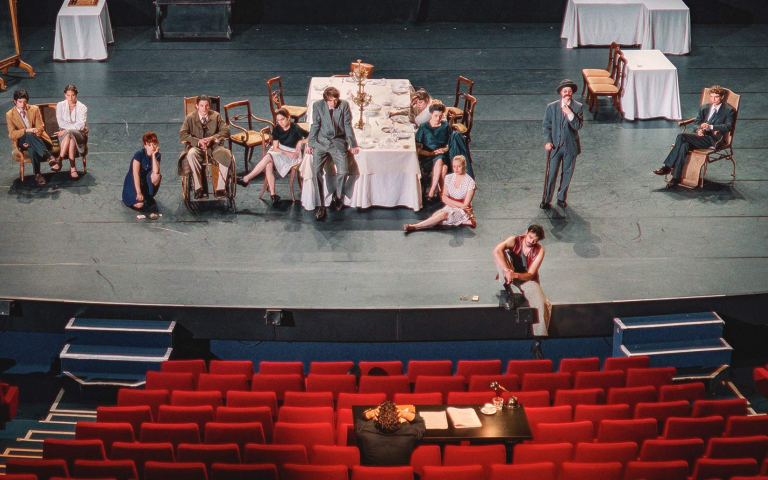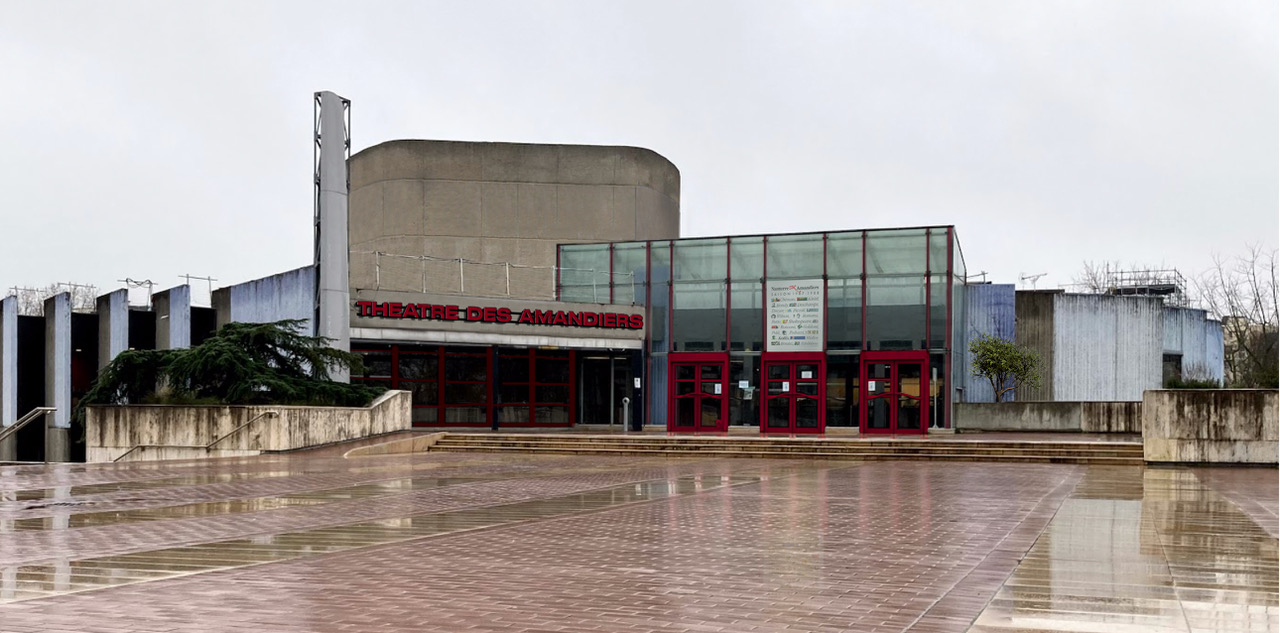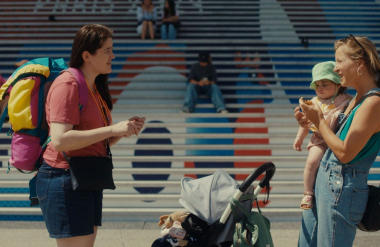
Featured in the official competition at the Cannes Film Festival 2022, the new film by actress and director Valeria Bruni Tedeschi highlights a place, the Nanterre - Amandier theater in the Haut-de-Seine region of France, and an era, that of Patrice Chéreau, who revealed the actress to the public in the 1980s. Deeply rooted in Paris Region, the project has received the support of the Paris Region Grant Fund and has been supported by our team.
Synopsis
At the end of the 80's, Stella, Etienne, Adèle and the whole troop are twenty years old. They take the entrance exam for the famous school created by Patrice Chéreau and Pierre Romans at the Théâtre des Amandiers in Nanterre. Thrust at full speed into life, passion, acting, love, they will experience together the turning point of their lives and also their first great tragedies.
key figures
-
days of filming in Paris Region
33
-
people employed
142
-
locations in Paris Region
16
-
Filming
With 33 days of filming in Paris Region and 2 in New York, Valéria Bruni Tedeschi's film is truly rooted in the Region. 14 companies from Paris Region worked on the project, including TSF group for equipment rentals, VIP loges for management and logistics, CLSFX for make-up and post-production studios Sounds factory and Autrechose VFX.
Resource Guide
Find all of these contractors and over 600 others in our Resource Guide. Access the Guide
In addition to the Paris Region contractors, the producers (Ad Vitam and Agat Films) put together a loyal team of technicians, including Logan Lelièvre as location manager, Julien Poupard as director of photography and Emmanuelle Duplay for the locations.
About fifteen natural locations were used for this project: Parisian cafés such as Le Vauban and La Rotonde, as well as the Pantin cemetery, the Haut de Pas church, the Cité Universitaire and the Invalides esplanade.
Of course, it was a theater that was the most mobilized on the project, but not the one you would expect. Since the Amandiers theater was not available for the film's filming dates (in summer 2021), the production had to turn to 2 different theaters. Film Paris Region was able to help the teams get the necessary filming permits from the city of Créteil.
Interview with Emmanuelle Duplay
Production designer
What was the main challenge for you as production designer on this film?
The biggest challenge was to find a place to replace the Nanterre Amandier theater, where we had planned to film, and which was an essential part of the script.
Why weren't you able to film in this theater?
When we got the dates for the film, we found out that the Amandiers theater was closing for extensive renovation work, and that it would no longer be possible to film there.
Valeria Bruni Tedeschi is a director who likes to embody places in a rather realistic way in general. When we realized that we couldn't film at the Amandiers, we really asked ourselves the question "How can we film Forever Young in another theater? “ Especially since Valeria had already filmed at the Amandiers during her film "Actresses", and she had really written her script with very precise images in mind.
How did you go about finding another location? Why did you choose Créteil? How did you find out about it?
I searched all over Paris Region, we saw a lot of theaters, but I quickly thought of the Maison de la Culture (MAC) in Créteil. I knew this theater and it had similar characteristics to the Amandiers: both buildings were created at the end of the 60s - middle of the 70s, with a strong political desire on both sides to build a cultural center in the heart of the city. The architectural structure of Créteil was quite similar to that of Nanterre, with a similar layout: a large building in the middle of nowhere, with a garden next to it. In addition to the exterior façade, there was a very large auditorium in Créteil just like in the Amandiers.
Only the rehearsal rooms were filmed in a different theater, in Brétigny, which had a beautiful room similar to the one in the Amandiers.
When I thought of the MAC, I made drawings and photo montages so that the director could project herself and see what a wide shot would look like. The decision to choose Créteil was also based on a visual sensation, Valeria was able to project herself in this proposal.

Was the script, which was written for a specific location, adapted following this change of location?
Not really. Only the restroom scenes - there are several in the film - required an adaptation in the staging. At the Amandiers, the restrooms are very large and quite unusual. On the other hand, the restrooms at the MAC are very small. We were therefore in totally opposite configurations. Finally Valeria was quite happy with this new constraint.
What was your job for this location?
For this film, I worked closely with Julien Poupard, the director of photography. He wanted to film in digital but with an analog film rendering to better embody the era of the film. This led to a lot of chromatic work in terms of design, in order to recreate the colors of the late 80's. We did several image tests with Julien to find the shade on the screen that corresponded to the Amandiers at that time. It is a red-bordeaux that is everywhere in the theater.
With my team we reworked the exterior facade and in particular the lettering of the time as well as the interior with the typical red radiators and the posters of that time. Since it is a natural location, nothing was done permanently. The paintings, the fixtures, everything was removed and dismantled after the production.
Of course if you look at one of the overall shots of the theater in the film, those who are used to the place will see that it's not the same theater, but that doesn't really matter. We managed to reproduce the atmosphere of the Amandiers and that was really what we were looking for.
Overall, it was a production with very few design interventions. The main posts were for painting, we had very little construction. For example, we had to rebuild one of the sets of a play that Patrice Chereau had put on in the main hall. Thanks to the visual archives at our disposal, we were able to reconstruct the sets exactly as they had been.

